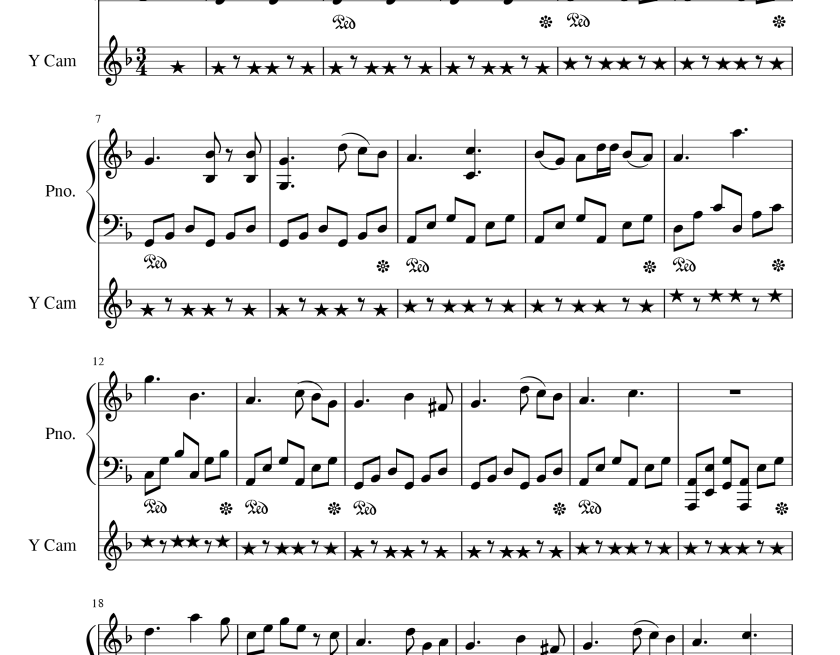Astronomer Uses Stars as Musical Instruments
Astronomers have long known that stars can vibrate like pealing bells. This observation has ushered in an entire sub discipline of astronomy known as astroseismology, in which astronomers attempt to better understand the structure of their charges by studying the way they vibrate.

It has also led to a bit of fun. Just as ordinary bells produce musical notes, astronomers have used the data from vibrating stars to create audible sounds, for example in this work.
Today, Burak Ulas at Izmir Turk College Planetarium in Turkey has gone a step further and composed a piece of music based on the chords recorded from the pulsations of a star called Y Cam A, one of a pair of eclipsing stars in a binary system.
A chord is a simultaneous sound of three or more different notes, or frequencies, with certain intervals between them. It turns out that Y Cam A vibrates in over a number of frequencies. Indeed, it produces a wave comprised of four sine-like frequencies that Ulas has teased apart and transformed into a series of musical chords with the help of the free audio software Audacity.
These chords form the basis of, and inspiration for, a piano composition that Ulas recorded separately. He then combined them both using a digital audio editor called GoldWave. In a sense he has used Y Cam A as a musical instrument.
Finally, he posted the file on SoundCloud where anyone can listen for free.
Have a listen. This star-music should provide a useful background for astronomers, or anyone else, in need of some heavenly sounds.
Ref: arxiv.org/abs/1507.07307 : The Multiperiodic Pulsating Star Y Cam A as a Musical Instrument
Keep Reading
Most Popular
Large language models can do jaw-dropping things. But nobody knows exactly why.
And that's a problem. Figuring it out is one of the biggest scientific puzzles of our time and a crucial step towards controlling more powerful future models.
How scientists traced a mysterious covid case back to six toilets
When wastewater surveillance turns into a hunt for a single infected individual, the ethics get tricky.
The problem with plug-in hybrids? Their drivers.
Plug-in hybrids are often sold as a transition to EVs, but new data from Europe shows we’re still underestimating the emissions they produce.
Stay connected
Get the latest updates from
MIT Technology Review
Discover special offers, top stories, upcoming events, and more.